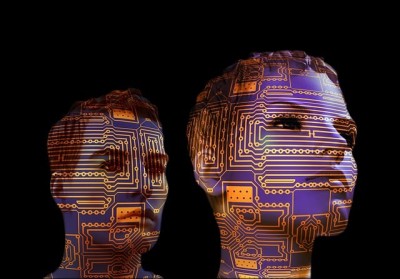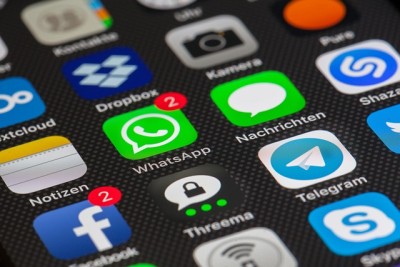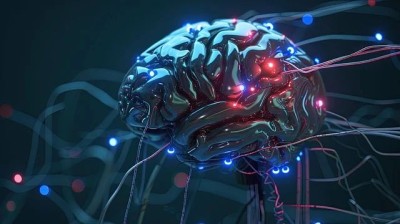Connected World: The Role of Tech in Modern Living
-1745570753.jpg)
We live in an era where technology is woven into the fabric of our daily lives. From smartphones and smart homes to cloud computing and artificial intelligence, we are part of a hyper-connected digital ecosystem that influences how we live, work, communicate, and even think. This “connected world” is no longer a futuristic idea—it’s the reality we navigate every day.
In this article, we’ll explore how technology has transformed modern living, highlighting the benefits, challenges, and the future of living in a world that is always online.
1. The Rise of a Digitally Connected Lifestyle
Just a few decades ago, basic access to the internet was a luxury. Today, it’s a necessity.
- Over 5.35 billion people use the internet globally (Statista, 2024).
- More than 6.9 billion smartphones are in use, connecting people to services, education, work, and entertainment.
- IoT (Internet of Things) devices—from smart fridges to wearable health trackers—are expected to exceed 30 billion worldwide by 2030.
This growing web of interconnected devices is what makes our world "smart"—smart cities, smart homes, smart health, and even smart agriculture.
2. Smart Homes: Convenience at Your Fingertips
The concept of a smart home has gone from luxury to mainstream.
✅ Examples of Smart Living:
- Voice assistants like Amazon Alexa and Google Assistant help you control appliances, play music, or set reminders.
- Smart thermostats such as Nest learn your heating preferences and adjust for energy efficiency.
- Smart security systems offer remote surveillance, doorbell cameras, and real-time alerts on your phone.
📊 Fact: According to Statista, over 57.5 million households in the U.S. alone use smart home devices as of 2023.
These devices not only make life more convenient but also enhance energy efficiency, boost security, and save time.
3. The Workplace Revolution: Remote and Digital
Technology has revolutionized the traditional 9-to-5 work environment.
Thanks to cloud computing, video conferencing tools (Zoom, Microsoft Teams), and collaborative platforms (Google Workspace, Slack), remote work has become a permanent fixture in many industries.
💡 Fact: A Gallup survey revealed that more than 70% of employees in knowledge-based jobs now work remotely at least part-time.
Benefits of Tech in the Workplace:
- Flexibility in work hours and location
- Increased productivity and collaboration tools
- Global hiring and talent acquisition
- Reduced overhead costs for companies
Yet, this digital transformation has also raised concerns about digital fatigue, data security, and the blurring of work-life boundaries.
4. Digital Health and Wellness
One of the most impactful uses of technology in modern life is in healthcare.
🔍 Examples of Digital Health Tech:
- Telemedicine platforms allow remote consultations, reducing the need for in-person visits.
- Wearable devices like Fitbits and Apple Watches track heart rate, sleep patterns, and physical activity.
- AI diagnostic tools assist doctors in detecting diseases like cancer, diabetes, and neurological disorders more accurately.
📈 Fact: The global digital health market was valued at over $330 billion in 2023, with continuous growth projected (Fortune Business Insights).
Digital health not only makes healthcare more accessible and personalized, but also empowers individuals to take proactive control of their well-being.
5. Education Reimagined: Learning in the Digital Age
Tech has changed the way we learn—from traditional classrooms to online platforms that offer global access.
🌐 Examples of Modern Learning Tools:
- Online courses from platforms like Coursera, edX, and Khan Academy
- AI-powered tools for personalized learning experiences
- VR and AR in education to create immersive learning environments
🎓 Fact: Over 220 million people have enrolled in at least one MOOC (Massive Open Online Course) since 2012.
Education is no longer confined to classrooms or age brackets. With a smartphone or laptop, anyone—anywhere—can become a lifelong learner.
6. Digital Entertainment and Social Life
From streaming movies to social networking, technology has redefined how we unwind and connect.
- Netflix, YouTube, Spotify, and similar platforms dominate digital entertainment.
- Social apps like Instagram, TikTok, and WhatsApp keep us connected across continents.
- Online gaming and virtual communities bring people together in real-time, creating new social norms and subcultures.
📊 Fact: The average person spends about 6 hours and 40 minutes online daily, with over 2.5 hours on social media alone (DataReportal, 2024).
However, this hyperconnectivity can also contribute to mental fatigue, digital addiction, and a decline in real-life interactions—reminding us of the importance of balance.
7. Challenges of a Hyperconnected World
While the benefits are immense, a connected world comes with its own set of risks and responsibilities.
⚠️ Key Concerns:
- Privacy: With every device connected, data collection has become widespread, often without full transparency.
- Cybersecurity threats: From identity theft to large-scale hacks, digital vulnerabilities are a serious issue.
- Mental health impacts: Overuse of screens and social media can lead to anxiety, depression, and sleep disorders.
- Digital divide: Not everyone has equal access to high-speed internet or smart devices, leading to inequality in education, work, and opportunity.
A truly connected world must also be inclusive, secure, and ethical.
8. What’s Next? The Future of a Connected Society
As technologies like 5G, blockchain, quantum computing, and AI continue to develop, our connected world is set to become even more integrated.
🔮 Predictions for the Future:
- Fully autonomous vehicles communicating with smart infrastructure
- Widespread use of augmented and virtual reality in work and education
- Cities that are entirely data-driven, optimizing energy, traffic, and safety in real time
- Digital twins—virtual replicas of people, products, or places used for simulation and planning
The challenge ahead lies in regulating, securing, and humanizing this evolution so that technological advancement serves people—not the other way around.
Thriving in a Connected World
Technology is not just a tool—it’s the framework of modern life. It influences how we communicate, work, learn, heal, and grow. In a connected world, the greatest opportunity lies not only in adopting technology but also in understanding it, using it responsibly, and ensuring it uplifts rather than isolates us.
As individuals and as a society, our role is to navigate this digital age with awareness, curiosity, and a commitment to building a future where technology supports well-being, inclusivity, and human connection.
-1745570755.jpg)
Smart Living: Embracing Technology for a Better Tomorrow
-1745570758.jpg)
The Rise of Automation: What It Means for Work and Life

The Ethical Dilemmas of AI and Machine Learning

Using Social Media the Right Way: Tips for Kids and Teens





-1745569762.jpg)
-1745569762.jpg)
-1745569769.jpg)
-1745569771.jpg)